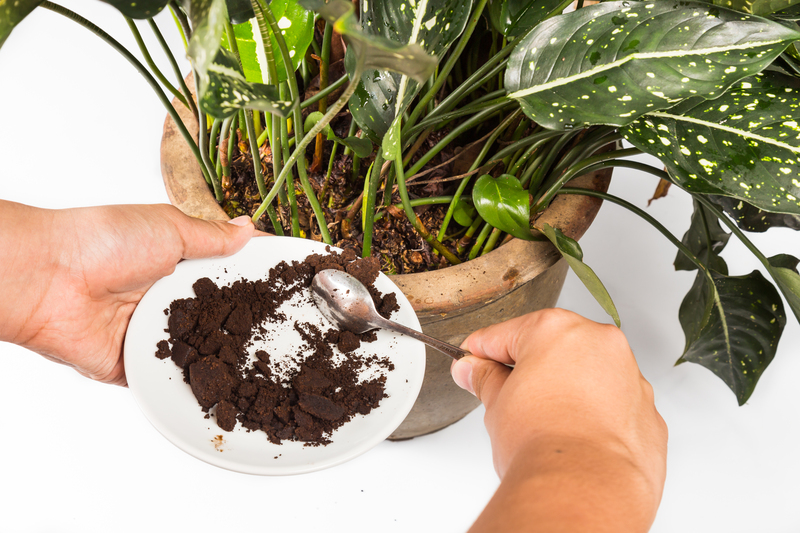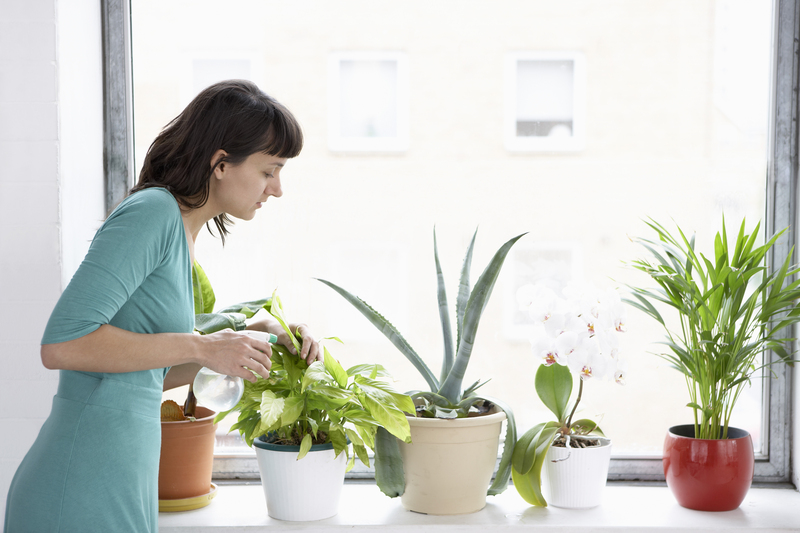Master the Basics of Starting a Home Herb Garden
Posted on 10/09/2025
Master the Basics of Starting a Home Herb Garden
Are you dreaming of savoring fresh basil pesto straight from your window sill or garnishing your dishes with cilantro grown just a few steps away? Starting a home herb garden is not only rewarding but also easier than you might think. This comprehensive guide will introduce you to the essentials of growing and maintaining your very own indoor or outdoor herb garden. Whether you are a beginner or a seasoned gardener looking to expand your green thumb, follow along to master the basics and create a flavorful addition to your kitchen.

Why Start a Home Herb Garden?
- Freshest Flavors: Homegrown herbs are more vibrant and flavorful than store-bought options.
- Cost-Effective: Save money by growing what you often buy at the grocery store.
- Convenience: Access your favorite herbs anytime, directly from your garden or windowsill.
- Health Benefits: Herbs add nutrition and antioxidants to your meals.
- Therapeutic Activities: Gardening helps reduce stress and improves mental well-being.
Choosing the Right Location for Your Home Herb Garden
The first step in starting a home herb garden is deciding where your herbs will live. Location is crucial for their growth and vitality. Here's what to consider:
Sunlight Requirements
- Most herbs require 6-8 hours of sunlight daily. Observe different areas in your home or yard and note which spots get the most sun.
- Indoor Windowsills: A south-facing window is ideal, but east and west-facing windows can also work.
- Outdoor Spaces: Look for a well-drained, protected spot that won't be shaded by trees or buildings during most of the day.
Container vs. In-ground Herb Gardens
- Container Gardens: Perfect for small spaces, balconies, and indoor gardening. Move containers as needed to capture sunlight.
- In-ground Gardens: Best for those with yard space and who wish to grow a larger variety or quantity of herbs.
Selecting the Best Herbs to Grow at Home
The success of your herb garden starts with choosing the right herbs for your environment and needs. Here are some excellent choices for beginner home herb gardens:
- Basil: Great for Italian dishes, pestos, and salads; loves warmth and sunlight.
- Mint: Extremely easy to grow; perfect for teas, cocktails, and desserts. *Keep mint in a pot as it spreads aggressively.*
- Thyme: Hardy, aromatic, and perfect for stews and meat dishes.
- Rosemary: Woody and fragrant; thrives in dry, sunny locations.
- Parsley: Two main types: curly and flat-leaf; both are versatile in the kitchen.
- Cilantro: Adds zest to Mexican and Asian recipes; loves cooler weather.
- Chives: Mild onion flavor; great in salads, omelets, and soups.
- Sage: Strong, earthy flavor; ideal for hearty dishes and holiday recipes.
- Dill: Essential for pickling and seafood dishes; prefers cool weather.
Essential Supplies for Your Home Herb Garden
Before digging in, gather these essential supplies for growing a home herb garden:
- Pots or Containers: Ensure they have proper drainage holes.
- Potting Soil: Use a high-quality, organic potting mix suitable for herbs.
- Seeds or Starter Plants: Pick based on your patience and preference. Starter plants offer quicker results, seeds are more economical.
- Watering Can or Spray Bottle: For consistent, gentle watering.
- Plant Markers: Label your herbs to keep track as they grow.
- Fertilizer (Optional): Organic options are ideal for edible plants.
How to Plant Your Home Herb Garden
Step 1: Preparing Containers or Garden Beds
- Containers: Make sure each pot has at least one drainage hole at the bottom. Place a saucer under each to catch excess water.
- Garden Beds: Loosen the soil to at least 6-8 inches deep. Amend with compost to provide nutrients.
Step 2: Planting Seeds or Starter Plants
- If Using Seeds: Follow packet instructions for planting depth and spacing. Keep soil moist until seeds germinate.
- If Using Starters: Gently remove plants from nursery pots. Loosen roots and plant at the same depth as in the original container.
- Spacing: Don't overcrowd. Allow air to circulate to prevent disease.
Step 3: Watering and Feeding
- Water Consistently but avoid soggy soil. Most herbs prefer evenly moist soil but will not tolerate waterlogged roots.
- Feed as Needed: Use an organic, balanced fertilizer once a month, or top dress with compost for in-ground gardens.
Basic Care Tips for Home Herb Gardens
Light, Temperature, and Air Circulation
- Monitor Sunlight: If indoors, rotate pots every few days so all sides receive light.
- Temperature: Most culinary herbs prefer temperatures between 60-75?F (15-24?C).
- Air Circulation: Good airflow prevents fungal disease. Don't cluster plants too closely together.
Pruning and Harvesting
- Begin Harvesting When: Plants are at least 6-8 inches tall; never remove more than one-third at a time.
- Regular Pruning: Encourages bushier growth and prevents flowering, which can reduce flavor (especially in basil and cilantro).
- Remove Dead Leaves: This keeps your plants healthy and productive.
Managing Pests and Problems
- Check for Pests: Aphids, spider mites, and whiteflies may appear. Remove by hand or use insecticidal soap if needed.
- Avoid Overwatering: Most herb diseases stem from too much moisture. Let soil dry slightly between waterings.
- Use Organic Solutions: Neem oil or diluted dish soap works for most problems.
How to Maximize Herb Growth and Flavor
- Pinch Flowers: Once your herbs start to flower, their leaf flavor can diminish. Regularly pinch off flower buds to prolong leafy growth.
- Rotate Indoors: During colder months, bring potted herbs indoors to extend the season.
- Succession Planting: Plant new seeds every few weeks, especially for fast-growing herbs like cilantro and basil, to ensure a constant supply.
- Feed Properly: Over-fertilizing can reduce flavor, so stick to monthly or bi-monthly feedings.
Harvesting and Preserving Your Homegrown Herbs
- Best Time to Harvest: In the morning after dew evaporates but before intense midday sun.
- How to Cut: Use clean, sharp scissors or pruning shears. Cut just above a leaf node to encourage regrowth.
- Drying: Bundle herbs and hang upside-down in a cool, dark, and well-ventilated place.
- Freezing: Chop herbs and freeze in ice cube trays with a little water or oil for easy use in winter.
- Storing Fresh: Keep freshly cut herbs in a vase with water on your kitchen counter, or refrigerate in a damp paper towel.
Ideas for Using Your Homegrown Herbs
- Cooking: Enhance meals with fresh basil, oregano, and rosemary.
- Herbal Tea: Use mint, lemon balm, or chamomile for soothing infusions.
- Homemade Sauces: Make pesto, chimichurri, or salsa verde.
- Infused Oils & Vinegars: Preserve flavor in olive oil or vinegar for dressings.
- Garnishes: Brighten any dish with a sprinkle of chives, parsley, or dill.
Common Mistakes to Avoid When Starting a Home Herb Garden
- Overwatering or Underwatering: Keep soil moist but never soaked. Adjust according to season and plant needs.
- Too Little Sunlight: Lack of sunshine leads to weak, leggy herbs. Supplement with a grow light if needed.
- Neglecting Pruning: Unpruned herbs can become woody and unproductive. Regularly trim for best results.
- Poor Soil Choice: Use lightweight, well-draining soil designed for container gardening or amend garden beds with compost.
- Crowded Planting: Proper spacing supports airflow and reduces risk of disease.

Frequently Asked Questions About Home Herb Gardening
1. Can I start a home herb garden from kitchen scraps?
Yes! Many common herbs like basil, mint, and green onions will root in water from cut stems and then can be transplanted to soil.
2. What are the easiest herbs to grow indoors?
Basil, mint, chives, parsley, thyme, and oregano are all beginner-friendly for indoor cultivation.
3. How often should I water my herbs?
Water when the top inch of soil feels dry to the touch. Different herbs may have different moisture preferences, but most don't like to sit in wet soil.
4. Do I need to use fertilizer for herbs?
Herbs are not heavy feeders. Add compost during planting and use a mild organic fertilizer every month or two, especially for container gardens.
5. Can herbs grow year-round?
Yes, with the right indoor setup (adequate light and temperature), many herbs can thrive all year.
Conclusion: Start Your Journey to Fresh, Homegrown Herbs
From seed selection to harvest, growing a home herb garden is a fulfilling project that brings flavor, fragrance, and joy to your home. With a bit of patience, sunlight, and attention, you'll quickly **master the basics of herb gardening at home** and enjoy fresh garnishes, teas, and home-cooked meals like never before.
Start your home herb garden today and savor the taste of freshly picked herbs in every dish!

